“Materials Sustainability by means of Energy and Eco-friendly Research Dimensions” a presiding message of the 7th issue of Advanced Materials Letters, July 2020
The critical step for environmental sustainability has been overshadowed by adapting green technologies and research. Advanced Materials Letters (AML) is happy to out its 7th issue, July 2020, which released “Materials Sustainability Information” to divert advance materials research and technology towards energy and eco-friendly research practices, while further maintaining objectives of non-toxic products and energy efficient materials. International Association of Advanced Materials (IAAM) publishes research articles in its official journal, AML, which has focused here on the advancement of materials by thermodynamics and structural properties research and compiled the IAAM’s aim of sustainable world.
The present issue targets several challenges posed by the pandemic and also includes technology articles which mention the design of materials through energy conversion. Research of phosphorus gasification in a novel reactor and the application of concrete electrical resistivity is important for better understanding of materials thermodynamics and structural durability. Value of environmental sustainability through water purifying bio-concrete mechanism and knowledge about materials transformation through research on graphite is discussed in articles in detail. The multi layer system of dielectric background, microwave absorbing mechanism, and Chopped Glass Fiber (CGF) Cement-Mortar Composites are important aspects which are discussed in detail for understanding and implicating in the advancement of the materials world.
The significance of this AML issue is that it contains an account of the IAAM efforts for July month that have been made with the help of expert research professionals through a network of organisations ('grass roots'), who have provided valuable comments and contribution in the articles. The articles collected in the issue cover sufficient information not just about materials research but also for its sustainable directions to become a one staple source of knowledge hub. IAAM is engaged in networking to promote and establish its priority over industrial benefits. IAAM directs and guides current movement of advanced materials research and technology through its not-for-profit, Diamond Open Access (DOA) journals which aim for ‘Advancement of materials to sustainable and green world’.
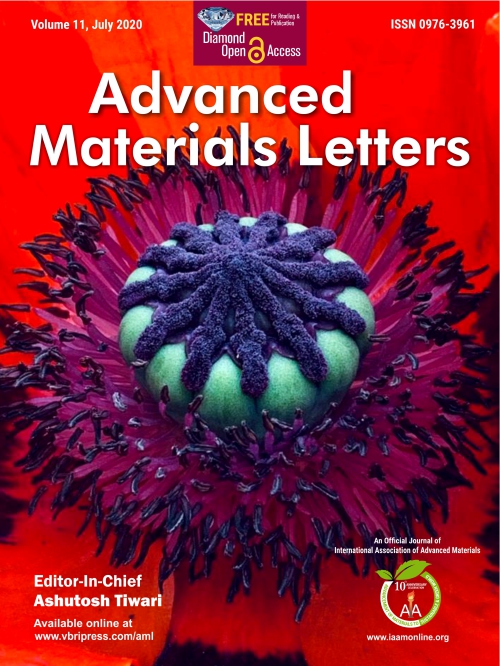
About Cover
Within the last two decades, environmental sustainability has come to be one of the global concerns for the living organism. The environmental sustainability is being discussed in all facets of our natural life – from designing eco homes and ecologically cognizant communities to finding sustainable food, energy, furniture, clothing, etc. Managing environmental health is very essential to safeguard us, and future generations, so that all can go green and can live healthy lives on this healthy sphere. The cover photo of the current July 2020 issue of Advanced Materials Letters is dedicated to the International Association of Advanced Materials’ agenda of the next decade - "Advancement of Materials to green and sustainable world".
Article 1. Adaptations and Lessons From COVID-19: A Perspective on How Some Industries Will Be Impacted
The first article of the issue is authored by Amar Velic et al. from Queensland University of Technology, Australia. This article describes the challenges generated in the industrial sectors due to novel coronavirus disease (COVID-19). Further it, discusses the threat of the SARS-CoV-2 virus, how scientists worldwide are working on COVID-19 to develop vaccines, treatment, etc. Further, the authors have explained current and forecasted changes in manufacturing, medical, climate change, energy, and food processing sectors. Some of these sectors have been positively impacted, such as climate change, whilst others have experienced mixed consequences. Finally, this paper highlights important recent developments and perspectives on how industries may adapt and learn from COVID-19.
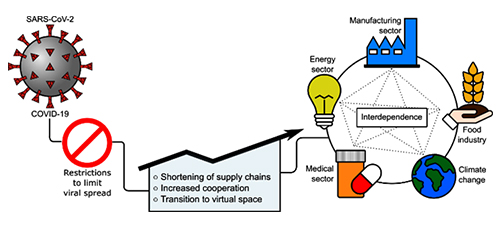
Article 2. Background and Strategies for Identification and Design of Materials for Thermochemical Energy Storage and Conversion
The second article of the issue is authored by Sandra Afflerbach et al., from Department Of Mechanical Engineering, University Of Siegen, Germany. Here, the authors have explained about the ecological issues accompanying energy generation and utilization within the past decade. This concise review summarizes the background and the scope of possible applications discussed in recent literature. The authors have explained about new scientific and technical solutions on the path to a sustainable energy future. A major obstacle accompanying this energy transition is the temporal intermittency of power generation from renewables. However, these hurdles can be overcome by the design of systems for energy storage and conversion.
Currently, thermochemical systems have come into the focus as they provide comparably highest storage densities and at the same time also provide options for heat conversion. Finally, the article concludes that an evaluation of possible use cases with a precise definition of their respective thermal boundary conditions would be of high value for a purposeful continuation of future screening approaches.
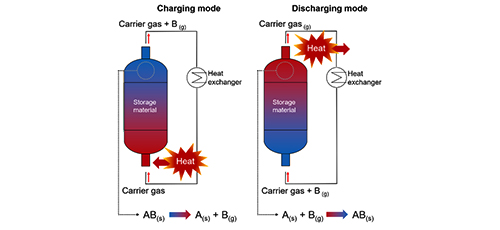
Article 3. Phosphorus Gasification During the Reduction of Basic Oxygen Furnace Slags In a Novel Reactor Concept
The third article of this issue is written by Christoph Ponak et al., from Department Of Environmental And Energy Process Engineering, Austria. Here, the authors’ research is focused on the removal of phosphorus from basic oxygen furnace slags via the gas phase during carbo-thermal reduction in a bed of inductively heated graphite pieces. Its purpose is to evaluate the effect of the application of a novel reactor concept on the possibilities of phosphorus gasification. In this article, the authors have described about the slags processes and molten slag forms. The most important results are that more than 95% of the phosphorus contained in the slags could be reduced, roughly 85% of which were removed via the gas phase. Virtually iron-, chromium- and phosphorus-free slags are obtained. Finally, the article concludes that the application of the presented reactor concept based on thermodynamic evaluations potentially tackles the challenges posed by the reaction behaviour of phosphorus.
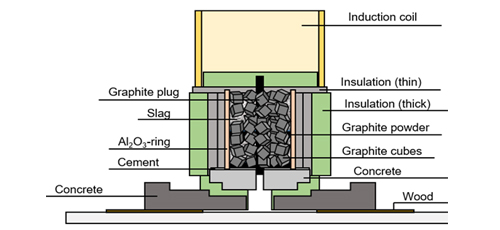
Article 4. Concrete Electrical Resistivity at Varied Water, Chloride Contents and Porosity – Experiment, Modelling & Application
The fourth article of the issue talks about how understanding of the relationship between the electrical resistivity and the major influencing factors of the concrete has been all the time a topical research in relation to structural durability. This paper reports an experimental study on the influences of water and chloride contents, and porosity on the electrical resistivity of the Portland cement concrete. This article is reported by Yu Wang et al., from School of Science, Engineering & Environment, University of Salford, UK. Here, the authors’ optimized results indicate that the electrical resistivity has a strong correlation with the water and chloride contents in concrete. A new characteristic model has been proposed and implemented into a numerical modelling case study of cathodic protection for reinforced concrete structure in saline environment.
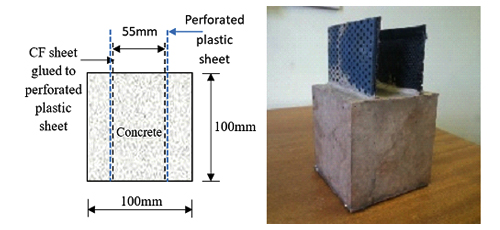
Article 5. Water Purifying Bio-Concrete
The fifth article discusses how water is a quintessential element of life, particularly in the arid zones, where rainfall is scanty and the ground water table is too low to satisfy the needs of living beings. Here, the author has explained that the rainwater does not have its own contaminants but when it touches the surface, it gets contaminated (physically, chemically, and biologically). The water thus harvested is used for drinking/ domestic purposes. The article focuses on the usage of bacteria for self-healing concrete such as Bacillus Licheniformis (BL) or Bacillus Subtilis (BS), for the purification of water. This article is reported by Rajiv Gupta, from Department of Civil Engineering, Birla Institute of Technology & Science, India. He tested two bacteria BL and BS and the results indicate that water is potable. These bacteria feed on the organic contaminants present in water and produce harmless end products. Cultured bacteria are mixed in concrete to make slabs or sprayed on plain slabs with different combinations. The efficiency is analyzed by testing the polluted water samples before and after passing through the slab.
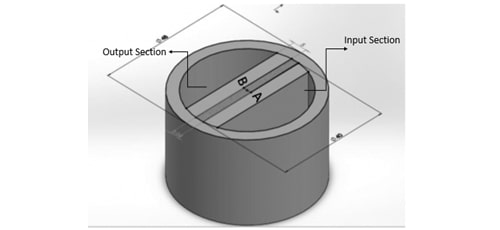
Article 6. Local Fluctuations of Transformation To “Amorphous Diamond” From C60 Fullerenes and Neutron-Irradiated Graphite Under Shock-Compression
The sixth article of the issue is authored by Keisuke Niwase from Department Of Physics, Hyogo University of Teacher Education, Japan. This article solely talks about C60 fullerene and neutron-irradiated graphite which directly transform into “amorphous diamond” under shock compression, but the transformation mechanism is still not clear.
Here, the author reported local fluctuations in the transformation to “amorphous diamond” from C60 fullerene and neutron- irradiated highly oriented pyrolytic graphite shock-compressed at 52 and 51 GPa respectively. He observed a small Raman peak of diamond, of which peak shape changes depending on the area of platelets. Finally, the author found an appearance of domain boundary between optically transparent and opaque areas, which respectively correspond to transformed and untransformed areas, thereby suggesting that some novel transformation process originated in the initial disordered structure.
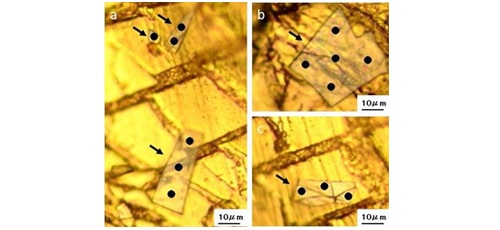
Article 7. Coulomb Drag of Electron-Electron Interactions In GaAs Bilayer With A Non Homogeneous Dielectric Background
The seventh article of the issue presents the details about multilayer system of dielectric background. Here, the authors analytically studied the coulomb drag effect in hetero-junction of GaAs system, which consist of a non-homogeneous dielectric background. By considering the weak interaction in static case, the effective dielectric function is evaluated by using Random Phase Approximation (RPA) method as RPA is a reliable study for high density regime.
This article was authored by Sharad Kumar Upadhyay and L. K. Saini from Applied Physics Department, Sardar Vallabhbhai National Institute of Technology, India. Here, drag resistivity is measured numerically and analytically, where temperature and density dependence are investigated and compared to 2DEG-2DEG double-layer structures theoretically and experimentally at a very low temperature.

Article 8. Effect Of Nd-Concentration In Nd(2-X)FexO3 System On The Crystal Structure And Microwave Absorption Characteristics
The eighth article of this issue talks about an experiment that aimed to investigate the effect of Nd-concentration in Nd(2-x)FexO3 system on the structure and microwave absorption characteristics. Nd(2-x)FexO3 system is a perovskite based system which has a relatively high permittivity. Nd(2-x)FexO3 (x=0.5; 1.0 and 1.2) samples were synthesized by Fe(NO3)3 and Nd(NO3)3 in mole ratio using sol–gel method and then sintered at 800°C for 5 hours. All of the samples were characterized using XRD to identify the phase, SEM to observe the morphology and VNA was used to measure the microwave absorption. This article is authored by Mashadi, Shelviana et al., from Center For Science And Technology Of Advanced Materials – National Nuclear Energy Agency, Indonesia. The results of microwave absorbing properties measured by using VNA (Vector Network Analyzer) shows the best ability of microwave absorption is x = 1.0 composition is around 96.27% at frequency of 10.46 GHz.
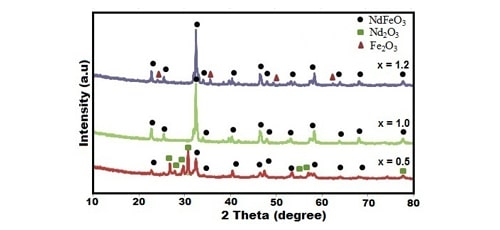
Article 9. Experimental Study On Strength Characteristics Of Chopped Glass Fiber (CGF) Cement-Mortar Composites
The ninth article of the issue described about the strength characteristics of Chopped Glass Fiber (CGF) Cement-Mortar. The hardened CGF composite mortars are inflated ductility resistant and absorbed upper load energy. CGF fiber compound mix materials consist of top strength, glass fiber implant in a cementitious matrix. CGF is another admixtures and alkali resistance. This article is reported by K. Ramakrishnan and C. Vijayvenkatesh from Department Of Structural Engineering, SASTRA University, India. Here, the authors’ research evaluates the different percentages CGF mix with the cement mortar and test in different casted specimens. The authors further explained that CGF fiber mix is a high mechanical properties consequence outcome. Con-currently fiber cement mortar composites are more efficiency of tensile and compression strength.
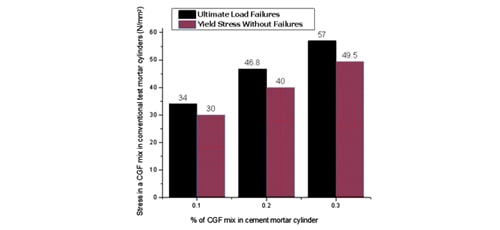
All the articles published in this issue are available free to read at https://www.vbripress.com/aml/. International Association of Advanced Materials, IAAM invites all the members from advanced materials community to promote this not-for-profit Diamond Open Access Policy by submitting their articles or special issue proposal in the Advanced Materials Letters. The peer-review process of submitted articles in the Advanced Materials Letters is done by manuscript central, ScholarOne – Web of Science Group – Clarivate Analytics, USA. The researchers are invited to submit their manuscripts at ScholarOne manuscript submission system.
July 2nd, 2020 IAAM Blog International Association of Advanced Materials Leave a Comment
Leave a Reply
Your email address will not be published. Required fields are marked *
Search
Recent Posts
- The 15th Anniversary of Advancing Materials
- Materials Triggered Towards Climate Neutral and Bio Active Functionality Via Nano and Electrochemical Interaction: Evolution of Advancement in the Volume 12 of Advanced Materials Letters, August 2021
- Promising Materials Features Transforming Sustainable Development with Intelligence and Green Chemistry: Exclusive Paradigm of the Volume 12 of Advanced Materials Letter, July 2021
- Attaining the SDGs Through Resilient Approach Needed High Performances Materials, Symbolize in the 6th Issue, Volume 12, June 2021 of Advanced Materials Letters